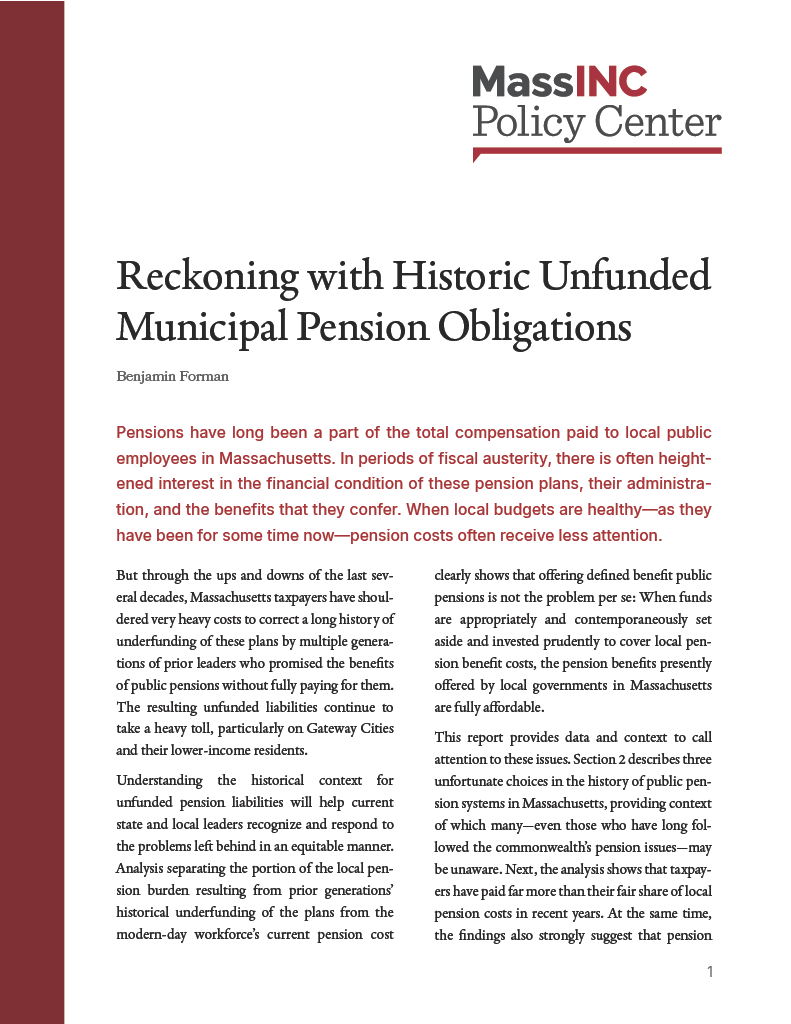Pensions have long been a key part of local public employee compensation in Massachusetts, but decades of underfunding by past leaders have left today’s taxpayers — particularly those in Gateway Cities — shouldering heavy costs. This report examines the historical decisions that contributed to these unfunded liabilities and highlights how current taxpayers are paying more than their fair share. It also presents data showing that offering defined benefit pensions remains affordable when funds are set aside and invested responsibly.
The report concludes with recommendations to improve transparency and accountability in local pension funding. It calls for stronger disclosures to taxpayers and explores a potential state-level funding approach to mitigate intergenerational inequities. Additionally, it suggests incentivizing local pension plans to manage assets more efficiently by investing through the state’s Pension Reserve Investment Management (PRIM) Board.
